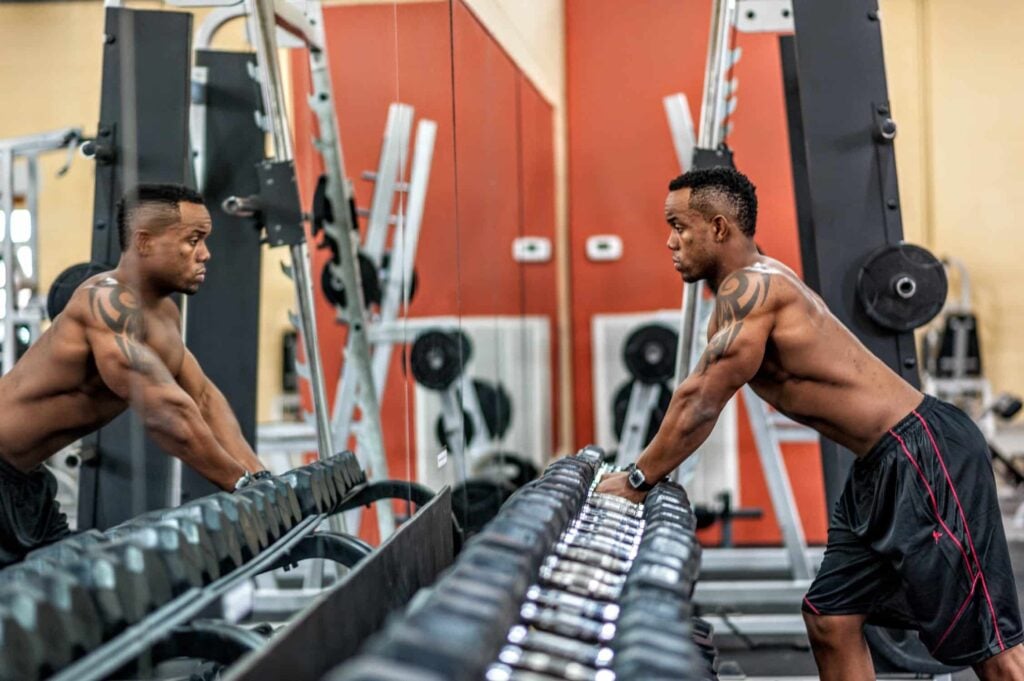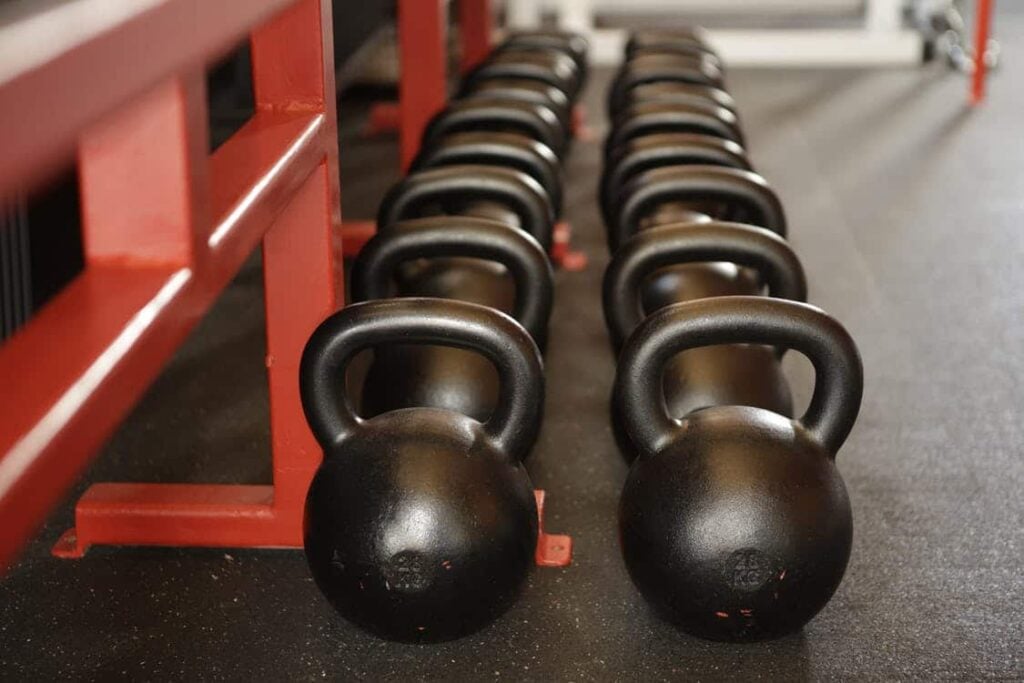
Today’s gyms are full of so many different machines that you’d be forgiven for not knowing how they work, let alone which is more effective for your goals.
Gym memberships cost money. Workouts take time. Lifting is hard. It makes sense to make sure your workouts are as effective as possible, right?
Are you wasting your time lining up for the leg press? Are you losing out on precious progress by sticking to the humble dumbbell? Read on to find out.
How Do Machines Differ from Free Weights?
Weightlifting machines are usually designed to target specific muscle groups through a limited range of movement. This means you can “sculpt” certain muscles to achieve a particular physique or zone in on any muscles that may be lagging.
They can also help to increase strength and mobility in new ways. Some machine exercises, such as cable rope face pulls, are terrific at working your external rotators, which will benefit your major free weight lifts like the bench press.
You’ll likely find you’re also able to lift more weight with a machine. This is because the machine is helping to stabilise the weight for you.
For example, if you do hip thrusts with just a barbell and a bench you’ll be exerting a lot of effort trying to balance and direct the bar. But if you use the smith machine, the locked range and added assistance means your muscles are focused only on pushing the bar up and lowering it down again.
Machines are also a great way to keep your workouts interesting. Suffering from barbell fatigue? Challenge yourself to try out an unfamiliar piece of equipment.

The Advantage of Lifting with Free Weights
Machines might target specific muscle groups, but this doesn’t necessarily lead to greater overall muscle gain.
Lifting a barbell, kettlebell, or dumbbells often requires the use of multiple muscle groups. For example, when you perform a kettlebell goblet squat, you’re using lots of different muscles to hold the weight up, push up from the bottom of the squat, and keep yourself balanced and stable during the entire movement. This is known as a compound movement.
Since compound movements utilise more muscles, you’re also experiencing more overall muscle growth and strength gains. This is why many lifters prefer free weights — especially big compound lifts like squats and deadlifts — for increasing general strength and encouraging greater muscle growth.
And since having more muscles allows your body to burn more calories, free weights may be superior if you’re lifting for weight loss.
But don’t forget: You can’t out-lift your diet.
Scared of the Free Weights Section?
Using free weights may have greater benefits for overall muscle and strength gain, but it’s not always practical.
Unless you have a spotter on hand, there are some exercises that can’t always be safely performed alone, such as barbell chest press. But many machines have inbuilt safety mechanisms to allow you to get yourself out from under any un-lift-able weight loads.
Want to PR your chest press but don’t have a spotter or dumbells that weigh enough? Use the smith machine so you can twist and lock the bar in place in case of emergency. No one likes doing the roll of shame.
However, there’s a big difference between avoiding the free weights section to reduce your risk of injury and avoiding them out of fear.
Yes, beginner lifters usually feel more comfortable using machines than picking up a dumbbell. But the only way to get over that fear is to pick it up and start lifting.
After more lifting tips? Check out our blog post comparing a full-body workout regimen with a muscle group split, and don’t forget to check back for more expert tips every month!